
Developer Dr. Kucho! Games
Publisher: Astrolabe Games
Platform: PC
Tested on: PC
Moons of Darsalon – Review
If you’ve been with us for a while, you may remember our review of Pilots of Darsalon, a physics-driven action shooter from Dr. Kucho! Games. A new game set in the same universe now beckons us to return to Darsalon. We’ll refrain from calling Moons of Darsalon a sequel, as neither the plot nor the gameplay has any ties to the former release. Instead of the action shooter that Pilots was, Moons of Darsalon offers puzzle-platforming gameplay instead. Does this retro-styled indie space adventure go above and beyond or does it crash and burn?
Story
Taking a rather unusual approach to its story premise, Moons of Darsalon relies on players piecing together its narrative from context. There is no introduction or setup here, but there doesn’t really need to be one either. Players step into the boots of one of the Darsanauts and must find and rescue other Darsanauts, which are miners stranded on the various moons of Darsalon. That’s pretty much all there is to Moons of Darsalon’s narrative, although the game is chock-full of self-referential meta-dialogue that continuously breaks the fourth wall. The characters are aware that they are in a video game, talking about the developer’s design choices and how they are not lemmings. There are genuine laughs in there, although it’s easy to miss bits of dialogue as you can click them away a bit too easily. NPCs will continuously criticize your choices, so there is a lot of self-deprecating humor here as well, which admittedly can get a bit tiring after a while, but at least initially you’ll get some laughs out of this.
Graphics
With its pixel art graphics, faux-CRT filter, and colorful environments, Moons of Darsalon definitely nails the retro aesthetic that it is going for. We quite enjoyed the art direction, although more visual variety would have been welcome here, as levels mainly consist of rocks, rocks, and nothing but rocks. The blurriness that comes with emulating CRT visuals on a modern screen was also a bit of a strain on our eyes, so we wouldn’t recommend playing this one for prolonged periods of time. The game’s interface is clear, giving all the necessary info at a glance, including how many Darsanauts are left to be discovered, how much energy and fuel is remaining, etc., without having to go into the menu to look at your goals.
Sound
Given the overall retro approach that Moons of Darsalon takes, we were a bit surprised to find that there is voice acting to be found in the game. Granted, there isn’t a whole lot of it, but our protagonist does have a voice, which sounds like someone attempting to imitate a cheesy ‘80s action hero a la Stallone or Schwarzenegger. This fits with the game’s humor and we quite enjoyed it. The true star of the soundscape is the synthwave soundtrack, however, which is just fantastic.
Gameplay
Although there isn’t anything particularly original about Moons of Darsalon’s individual elements, the game retains a sense of uniqueness thanks to how it wonderfully blends everything together. What you’re getting here is a retro puzzle platformer that is clearly a labor of love from Dr. Kucho! Games, paying homage to the likes of old-school Amiga games, Flashback, Abe’s Odyssey, and even Pikmin. While this wonderful blend of old-school influences definitely will not appeal to everyone, those with a penchant for retro gaming will absolutely adore what’s being offered here. The game’s puzzles are physics-based and involve destructible terrain as well. The setup for each level is deceptively straightforward. Taking control of our Darsanaut protagonist, your task is to locate your colleagues and ensure their survival.
Tracking down the various Darsanauts is a challenge in itself, as it isn’t always clear where they are hiding out. In addition, places that look like logical hiding spots often house surprises and dangers, so you’ll need to be wary at all times. Once you locate one or more Darsanauts, they’ll start following you around, and you’ll need to cooperate with them to overcome some of the trickier stage hazards. Using preset commands and your trusty flashlight, you can get the Darsanauts to stay put, direct them elsewhere, or simply walk behind you. The puzzles that comprise each stage revolve around having the Darsanauts perform simple tasks. There is often more than one way to clear a stage, and you’re judged on how fast a level is cleared, how much health you have remaining, and how many NPC Darsanauts make it to the end of the level. You won’t always be able to save every Darsanaut, but this is by design, so be prepared to make some sacrifices for the greater good.
The levels are fairly short, but because puzzles can be solved in different ways, there is a huge degree of replayability present here as you try to find new ways to beat your personal high score. Moons of Darsalon introduces new tools and mechanics gradually, so chances are you’ll stick to what you’re familiar with during your first playthrough, but on subsequent attempts, you’ll be pressed to discover more creative ways to rescue other Darsanauts and deal with enemies. Speaking of those, while evil aliens and other obstacles are out to ruin your day, the focus is still more on puzzle-solving than going on a galactic genocide.
Although Moons of Darsalon can be played with a mouse and keyboard, we do not recommend this setup as the game was clearly designed to be played with a controller. We tried both options and the difference was night and day. Platforming with the keyboard in particular felt awkward and clunky, although aiming your flashlight with the mouse was buttery smooth. Despite the wide range of tools at your disposal, which we assumed would be more manageable using keyboard shortcuts, we found that in practice our trusty pro controller was more than capable for the job.
Beyond the main campaign, Moons of Darsalon also offers a level creator, and the possibility to share your creations with other players. While the available tools are understandably fairly limited, something like this does wonders for longevity and replayability, and we can imagine that a small but dedicated community is going to create fantastic new levels over the next few years. Given Moons of Darsalon’s overall difficulty level, which feels tricky but not unfair, most players will get the feeling they got plenty of bang for their $20.
Conclusion
We were pleasantly surprised by Moons of Darsalon’s blend of gameplay. The game doesn’t feel wholly unique, but it’s clearly a labor of love that has plenty to offer to retro game enthusiasts. We could have done without the eye-straining CRT filter, and the story could have been fleshed out beyond self-referential meta-jokes, but the gameplay more than makes up for these shortcomings. This is definitely a title worth checking out if you’re nostalgic about the puzzle platformers of the 80s and 90s.
Moons of Darsalon - Review,1 Comment
Leave a Reply
You must be logged in to post a comment.

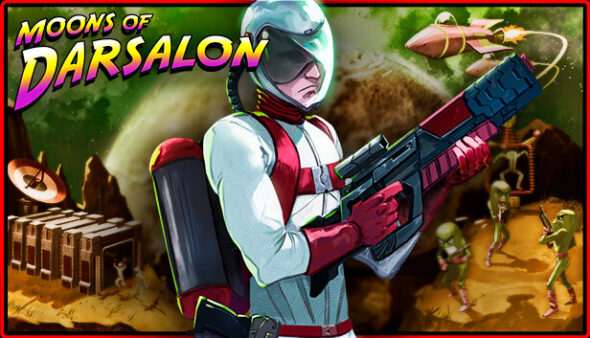
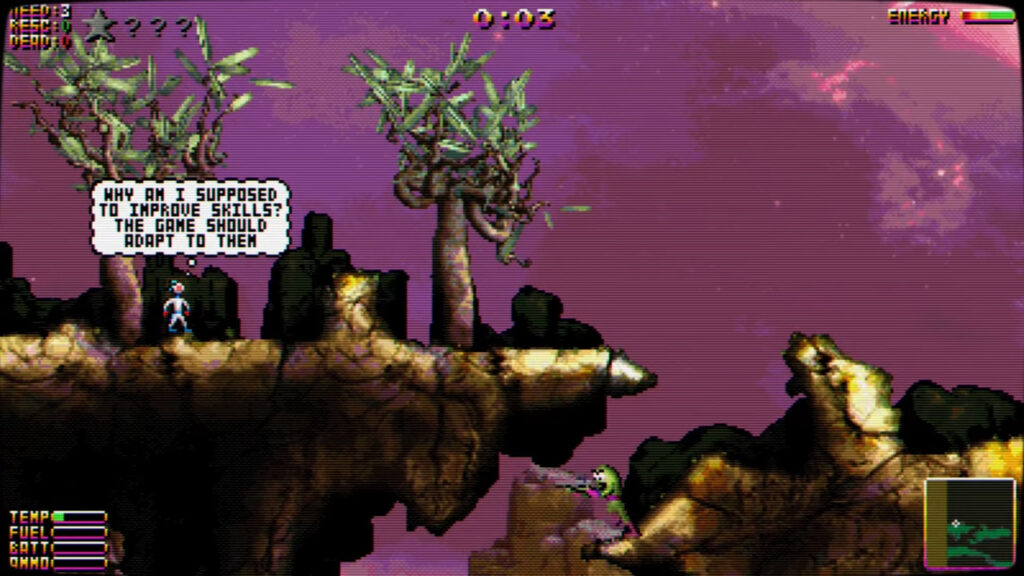
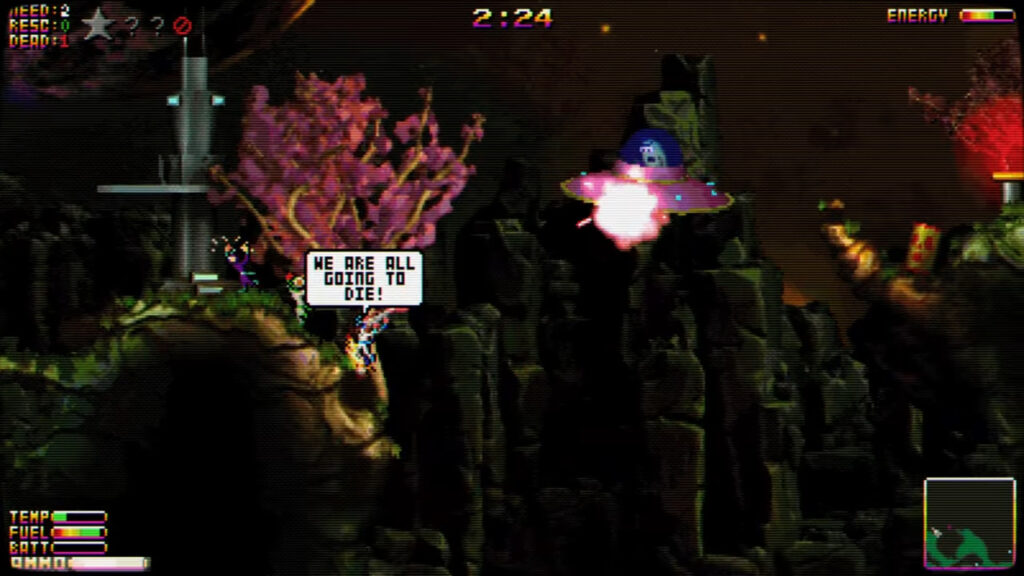
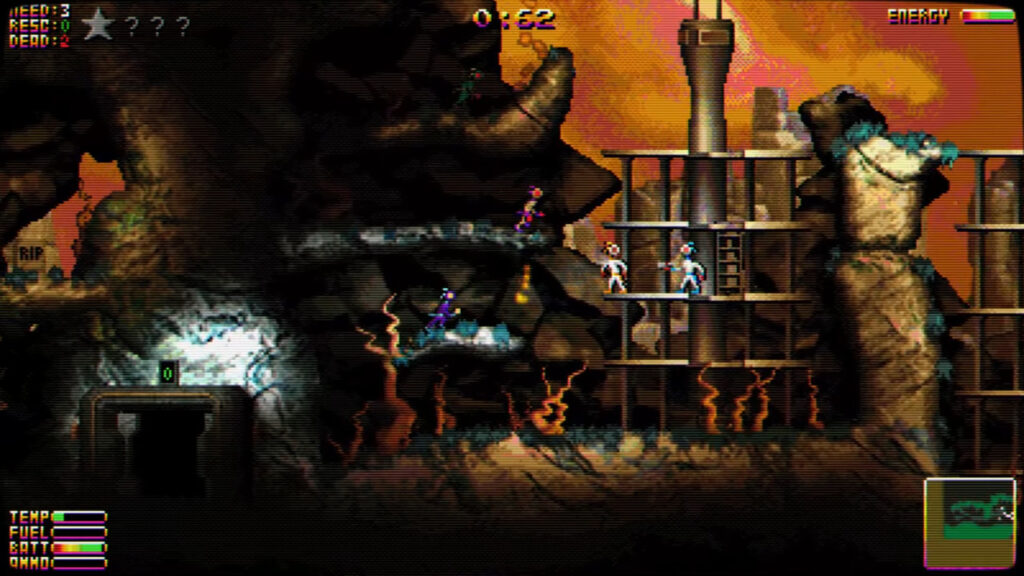
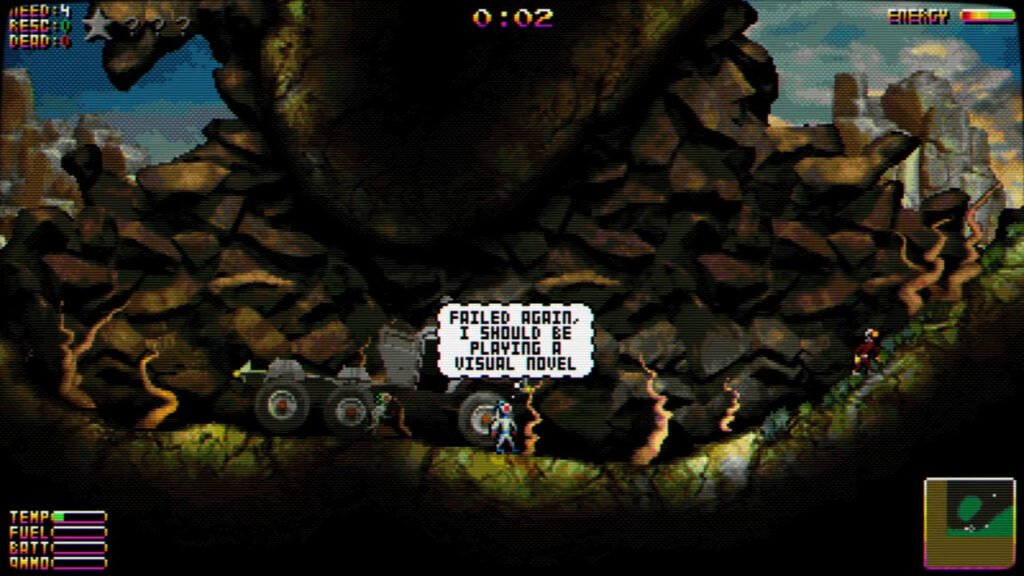




[…] developer Dr. Kucho! Games has announced the console release of Moons of Darsalon, a retro-inspired action platformer with advanced physics. This “save-them-all” game […]